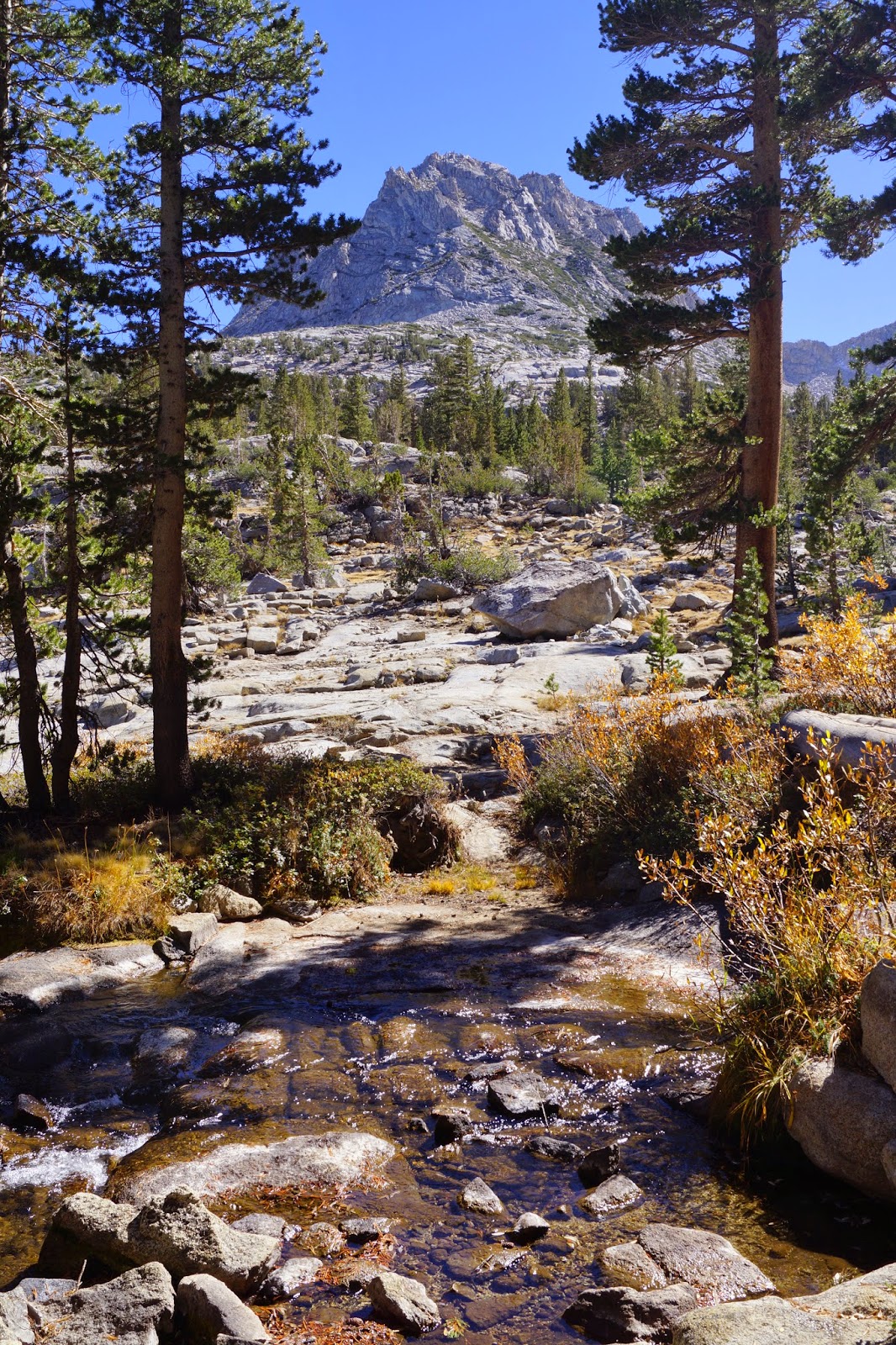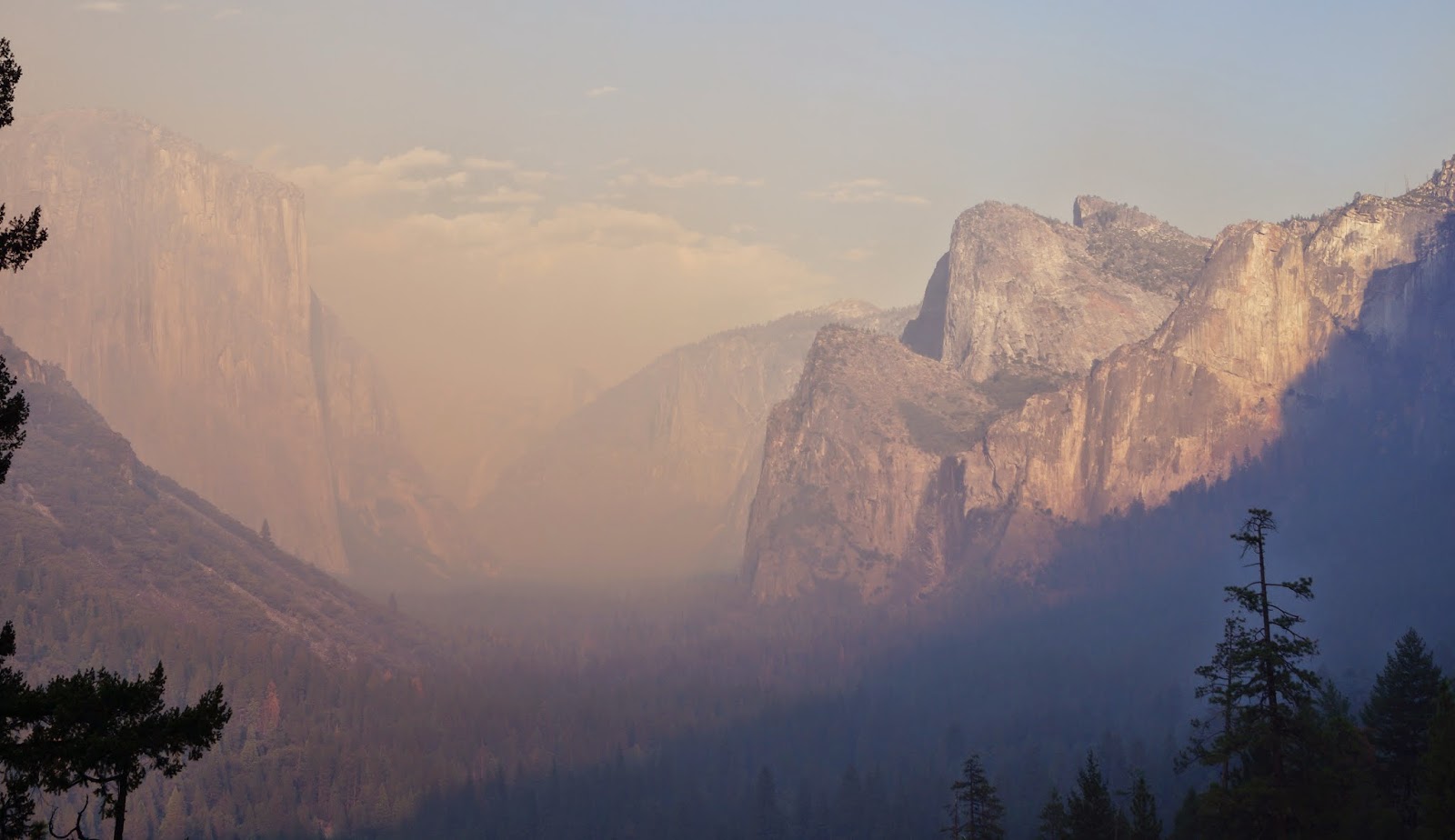While in Bishop, CA we stayed at the Highlands RV Park, a perfectly nice park except that the site pads are narrow and close together, with trees strategically placed so as to make pulling into even many of the pull-thru's a little dicey. We really liked Bishop, with special mention going to Schat's Bakkery, Mountain Light Gallery and Wilson's Eastside Sports store, all within a few blocks of each other on Main St/395. Bishop is a great location from which to explore much of the most spectacular parts of the Eastern Sierras, including the Ancient Bristlecone Pine Forest.
We've been traveling south of 395 for about a month now, and at Bishop we're at the northern end of the Owens Valley, bounded by the Sierras to the west (above) and the White Mountains to the east. To get to the Ancient Bristlecones you have to travel a bit further south to Big Pine, then go east into the White Mountains. Just east of Big Pine is the grand old Black Mountain (below) standing pretty much alone. Most of the range of mountains to the east is sedimentary rock, while the Sierras are granite, so they have very different characters.
While Ms. Subaru toiled up the White Mountains for us we passed through several different habitats, ranging from almost bare scrub to a healthy pinyon/juniper forest. The pinyons are having a bumper crop of pine cones and nuts this year, and we saw several groups of people out harvesting. (What a sticky business that must be.) That's a pinyon loaded with cones in the picture below taken from the "Sierra Vista" overlook, with Bishop and the Sierras in the distance.
There's a spanking new Visitors' Center at the entry to the Ancient Bristlecone Pine Forest to replace the one that burned down. Also note the cool metalwork trim on the sign below.
Bristlecone pines are unique in their preference for high altitudes and nutrient poor soil. In fact, the worse the soil, and the harder the conditions, the longer they live - some over 4,000 years! The challenging conditions make them grow harder, denser wood, that survives pest infestation better. Many of the trees have dead portions where the bark is gone and you can see the rich, aged wood.
They are called bristlecones because their purple or pale green new cones have bristles on the tips of their scales.
Their needles are in bundles of five and are evenly spaced around all sides of the branch.
This gives them a very distinct silhouette with long tubular shaped branches.
The clouds were doing some really incredible things. The shapes of the trees and the clouds kept echoing each other.
The trees are not immense, like the redwoods or sequoias, but they are older. They grow very slowly. The tree below is comparatively young, maybe a hundred years old, and is about six feet tall.
We walked the Discover Trail, a mile long trail that goes up and over a rise where many of the older trees are interspersed with younger ones. It's not what I'd call an "easy" walk for anyone who may doubt their ability to walk up and then down, at these high altitudes. But the trail is obvious, heavily traveled and well cared for.
It turns out we walked it backwards, and missed the opportunity to pick up a trail guide with descriptions of marked locations and trees. Oh well. The first (last) section of the trail passes around the edge of a large hill of red quartzite talus.
Looking back at the road to the Visitors Center and the Sierra's beyond.
These two magnificent old guys are near the end of the trail, if you're going the right way, so don't turn back before you make the loop.
Another view of the two elders, with a third walking up the hill.
It was a starkly beautiful day...
…in contrast to the complex contortions of some of the trees.
A final view of Black Mountain and the Sierras on our way back to Bishop.






















































